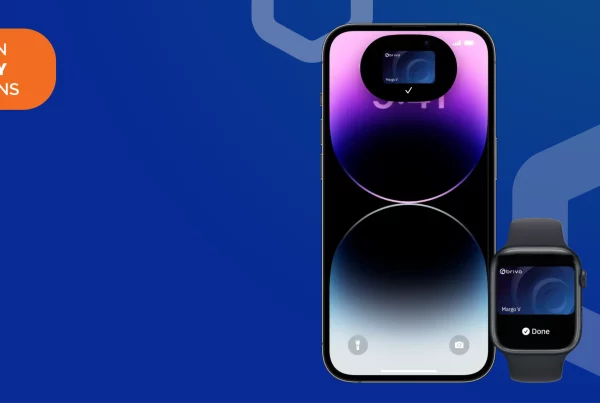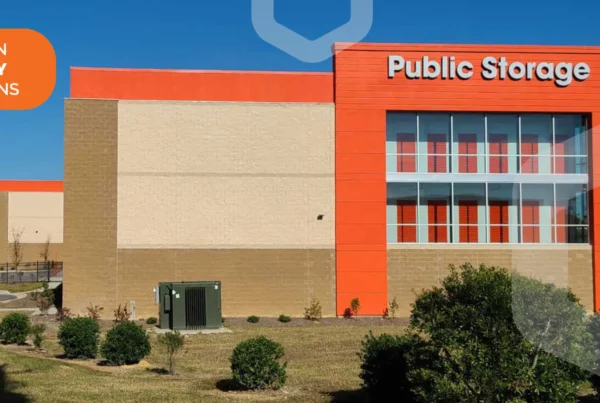PHYSICAL ACCESS CONTROL – If there is a location in your facility where sensitive equipment or data is kept, you might have thought about adding more physical security measures to protect your company’s most important data. You might find the security you need in physical access control. This tutorial examines physical access control, including what it is, why it can be a suitable option for your company, and crucial physical access control practices to be aware of.
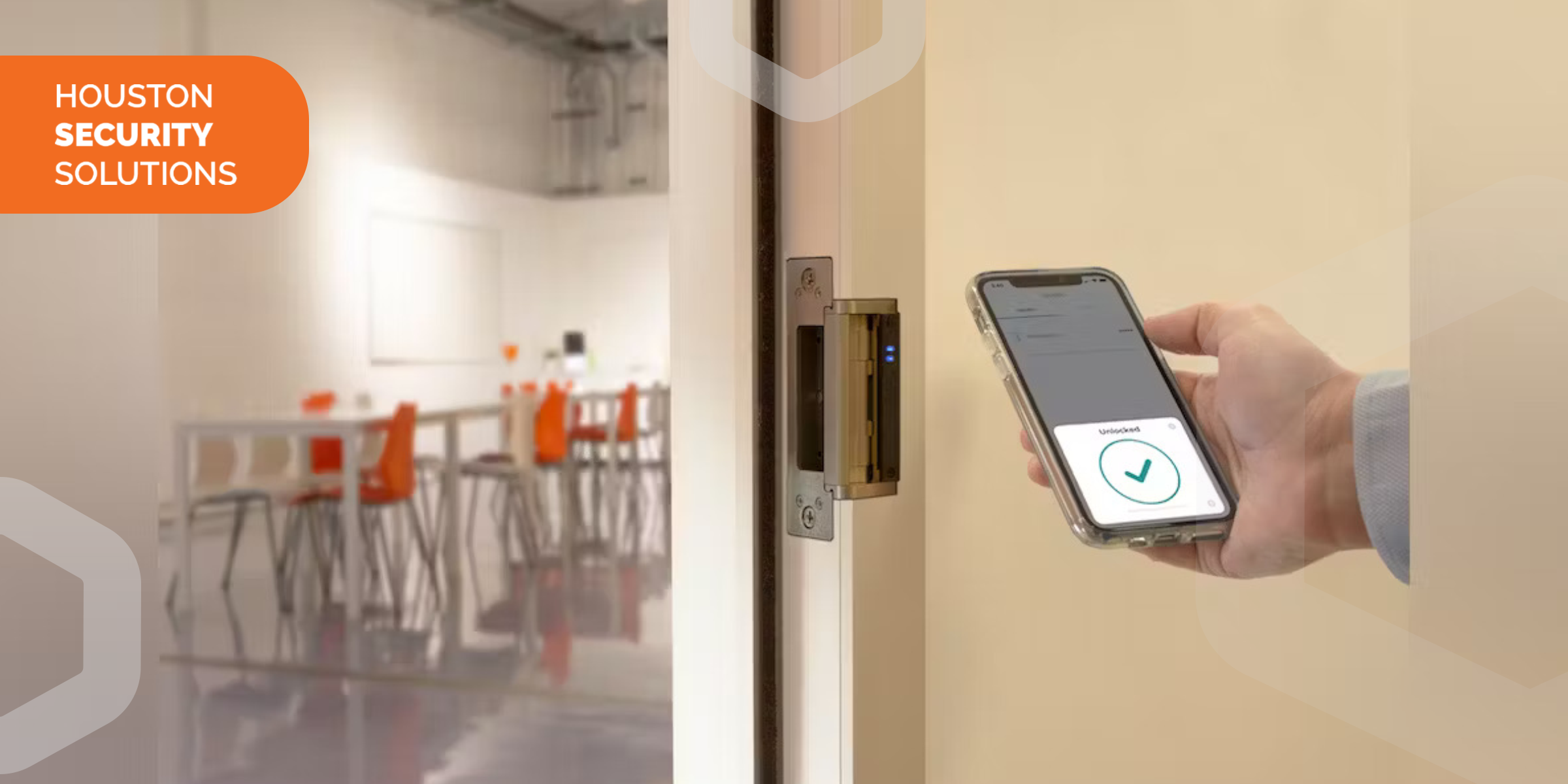
Components of physical access control systems
What are physical access controls and physical access control security, then? Let’s start with that. Physical access control systems, also referred to as PACS, are a category of security system used to permit or restrict access to a facility or a particular area within a building.
Only those with the proper credentials can enter, thanks to access control physical security. This indicates that you are safe from intruders. For authorized users, physical access control security can also contribute to a more seamless user experience throughout a property. Various access levels can be defined for different users, which means that only people with the right authorization can enter sensitive portions of a building.
Access levels are typically set by giving different levels of access to different individuals or groups of users at a certain level, such executives or contractors. Using a key fob door entry system, entry card, or PIN to get entrance to a building’s main door for all users while restricting access to certain areas that house secure, sensitive, or privileged information is an example of physical access control.
In the past, security guards would manually approve or prohibit access at important entry points. Physical security access control is now computerized. Instead of using conventional physical keys, physical access control systems (PACS) use key fobs, swipe cards, and personal identification numbers (PINs) to validate authorization. Physical security access control policies give you fine-grained control over building access. Individuals can be granted access or denied access using physical access control plans and systems, which can also be used to:
In the case of an emergency, initiate lockdowns.
Reduce access to populated places
In the event of an evacuation, report the whereabouts of persons.
Access Your Office with Smartphone
Discover why thousands of companies have Access Control System
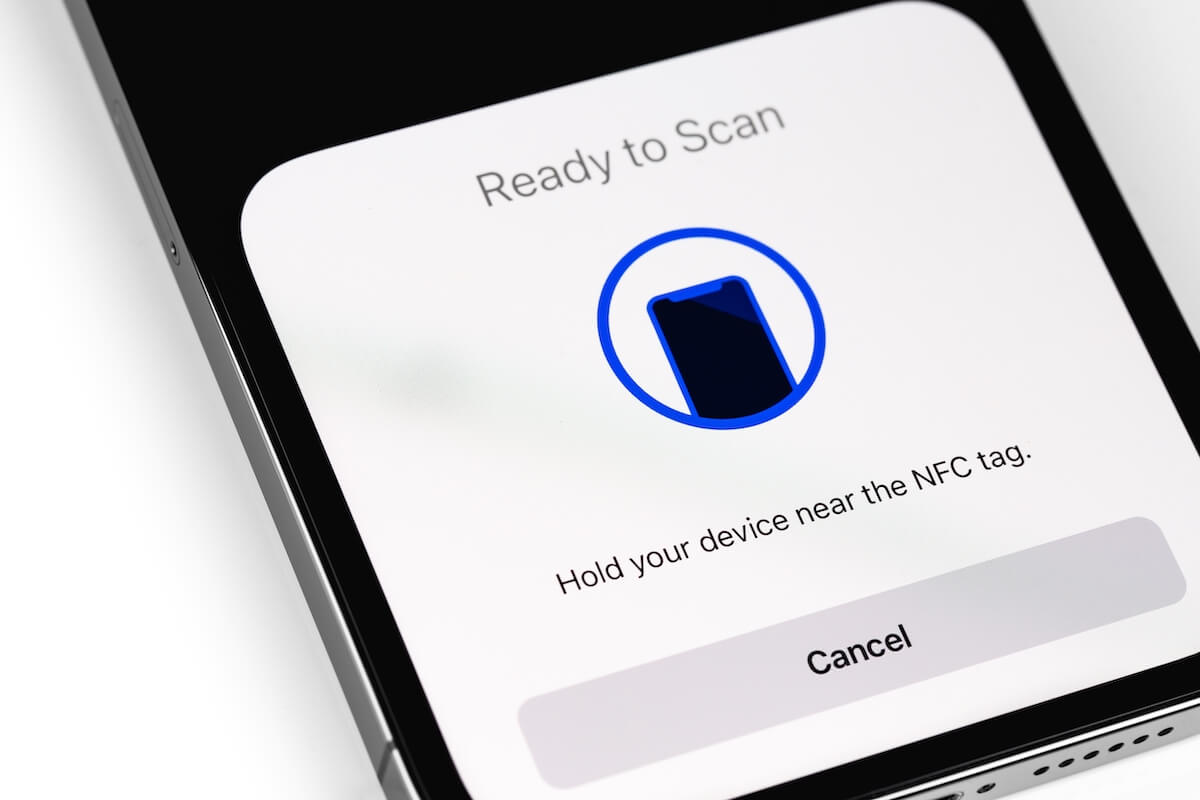
Components of physical access control systems
A physical access control system is made up of numerous important parts. They comprise:
Access points are the physical entry points where security measures are deployed to prevent unwanted access. Commercial door locks, turnstiles, security gate systems, and other physical barriers are typical instances of physical access control.
Personal credentials identification: The majority of PACS demand that users have a way to identify themselves and demonstrate their right to enter the physical environment. Key fobs, key cards, mobile apps, PINs, passwords, encrypted ID badges, biometrics, and license plate recognition are all examples of personal identity techniques. According to a recent research, 60% of organizations use ID badges for access control, but more sophisticated technologies are starting to catch on. 32% of businesses use mobile IDs, 30% of businesses use biometric identity, and 25% of businesses use license plate recognition.
Readers: Regardless of the credentials you use to confirm users’ identities, these will be utilized at access points where a reader or keypad is installed. The data will be sent to a control panel seeking authorization to enter after the user has entered their PIN or swiped a card.
Control panel: The control panel receives data from a reader and verifies authorization. If the credential is accepted, permission will be granted and the entrance point will be unlocked so the user can enter. A user won’t be able to enter the building if their credential isn’t accepted.
Access control server: This can run locally or in the cloud. Whether it is physical or cloud-based, an access control server contains user information, access privileges, and audit logs. Administrators can view reports of previous entry attempts and failures since the server keeps track of activities.
The PACS must be used in conjunction with doors that have electronic locks that can be set to open automatically when proper credentials are supplied. Although security standards might specify the type of lock to employ if you’re defending particular areas of your building, you can select to use fail-safe or fail-secure locks. In order to comply with fire rules, entry doors, for instance, must utilize fail-safe locks that permit individuals to leave at any moment.
Cloud Based Access Control
Learn about cloud based access control system and its futures.
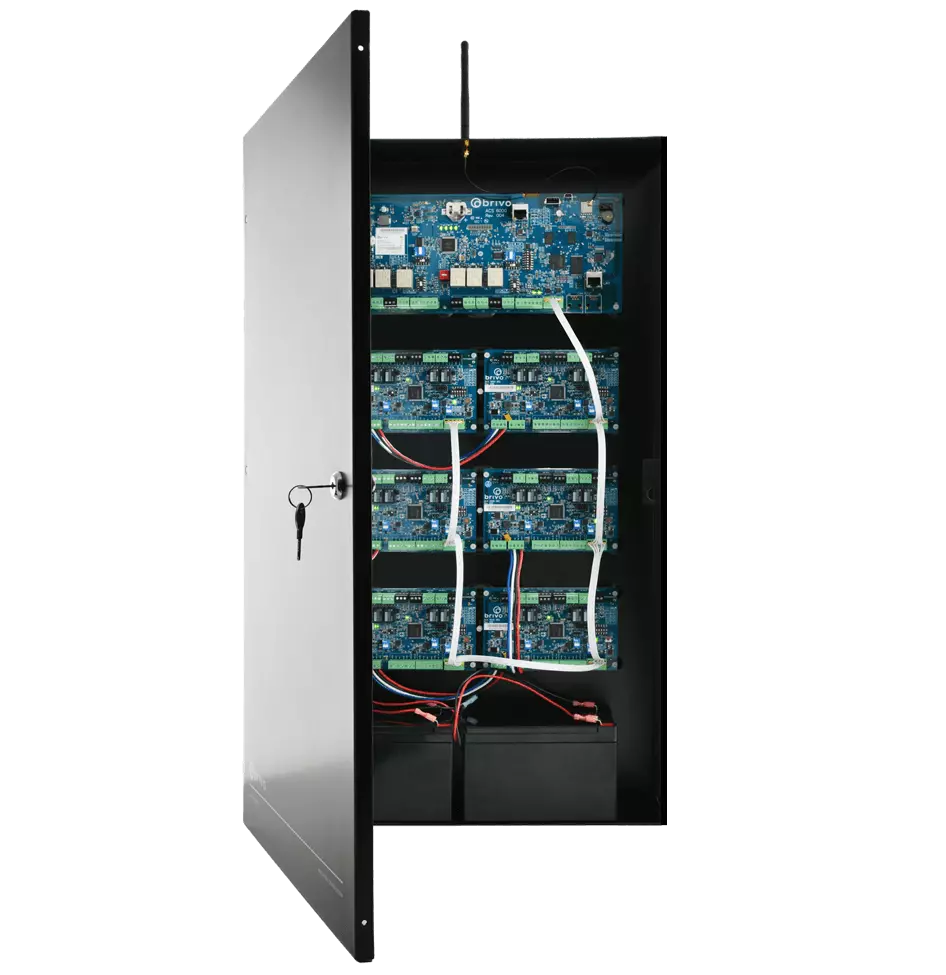
Physical access control authentication methods
Here are some typical physical access control authentication examples, along with their benefits and drawbacks:
These physical access control security credentials, such as cards or key fobs, can be programmed with the appropriate security level for each employee to let them in and out of the areas of a facility they are authorized to access. Card or key fob credentials can also be used to authenticate office machines like printers, copiers, and scanners. But, they could get misplaced, and it’s not always feasible to identify the cardholder. This means that if an unauthorized person obtains a card belonging to an employee, they will be able to enter locations that are not allowed.
Mobile devices: Mobile applications are a type of physical access control security credential that can be utilized, with entrance privileges that are easily changeable for various users and entry points. The administrator may simply alter permissions on the app, and access rights can be added or removed with a few clicks. Mobile phones can also be easily misplaced, just like cards and fobs. Even if hackers manage to get their hands on an approved user’s phone, it will be more challenging for them to enter the system because the majority of users have password protection or biometrics installed.
Biometrics: Because each user’s fingerprint, iris, or palmprint is unique, biometric technology offers a high level of protection for enterprises. Unlike security cards or fobs, they are extremely difficult to copy. The drawback of this physical access control security access approach is the higher cost of biometric technology.
Join UPS Stores Using Access Control
With Cloud Based Access Control, UPS Stores can regulate and track who enters its facility for PO Boxes.
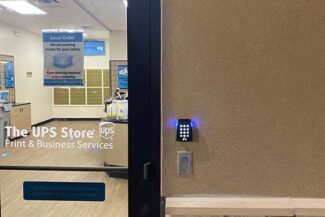
Why are physical access control systems important?
Increased security is the main advantage of a physical access control system. A PACS system allows building operators management over every area and enhances the possibility that unauthorized individuals won’t be able to enter restricted zones. Operators can be precise about which personnel have access to which areas of a building since security measures may be implemented at a detailed level.
A PACS can assist in reducing the risk of security breaches from both internal and external sources. According to the 2022 Cost of Insider Threats: Global Report, insider threat occurrences increased by 44% over the previous two years, and the cost per incident increased by more than a third to $15.38 million.
PACS can also assist buildings in adhering to rules in specific sectors, including the healthcare sector. Healthcare businesses can remain fully compliant and safeguard the private information of their patients by protecting the areas where confidential information is kept.
Commercial security cameras for business
- Business security cameras with enhanced coverage and IR that improve situational awareness
- Video analytics with AI to find incidents
- Hours of video are easily sorted through by Video Search to locate a suspicious person or vehicle.
- Integrates with third-party ONVIF® compliant platforms
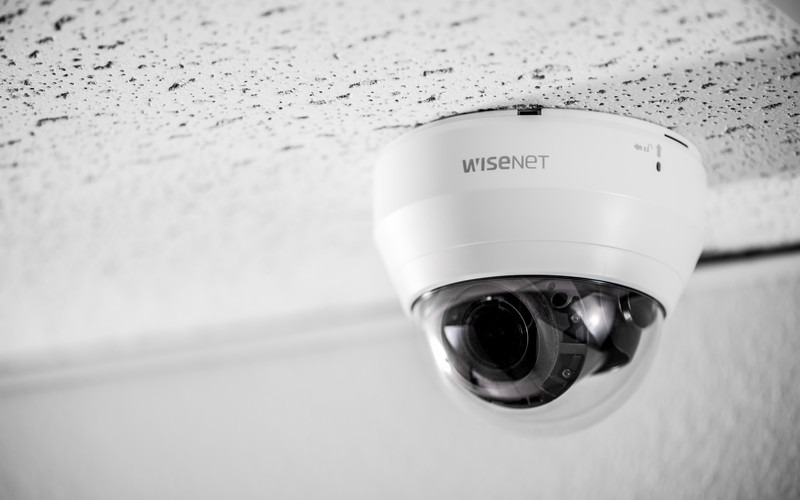
PACS vs. logical access control
Both logical and physical access control systems are focused on controlling who has access to data and restricted places. Logical access control focuses on ensuring that only the appropriate personnel have access to your digital assets and data, whereas physical access security controls restrict access to physical premises and places, including entire buildings, offices, rooms, and IT assets.
What is logical access control?
Whereas logical access control prevents unauthorized individuals from accessing your digital resources, networks, system files, and data, PACS prevents illegal access to your physical sites.
Logical access control often uses a combination of identity, authentication, and authorization protocols, requiring PIN codes or passwords to enable access. The three fundamental elements of logical security are as follows:
Identification: A user must identify themselves, typically by inputting an email address or username.
Authentication: The user submits identification documentation. There are three possible ways to present this evidence:
“Something you know,” such as a password or PIN
“Something you have,” like a keycard or key fob, “Something you are,” like fingerprints
Authorization: The system will provide access to the system or data after confirming a user’s identification.
“Something you know” verification is most frequently used when it comes to accessing digital data on computers.
To establish a more complete security system that helps to safeguard both your property and data, physical access control strategies can be paired with logical and physical security.
Don’t risk legal
responsibilities.
Contact us right now to set up a consultation with one of our qualified security consultants. We will assist you in seamlessly navigating the complicated terrain of video surveillance laws. Your company deserves the greatest protection possible!
Cloud-based or on-premise PACS
Physical access control solutions can be placed on your premises or in the cloud, and both have advantages and downsides.
When you choose an on-premise PACS, access is controlled by network administrators using restrictions on computers inside your premises.
Cloud-based PACS may be managed from anywhere, allowing operators and security teams to control building access even when they are not physically present in the building. Remotely adding and removing authentications, running reports, and troubleshooting problems are all possible for operators. A cloud PACS is a versatile solution that works well in contemporary office settings.
What to look for in a physical access control system
There are a few crucial factors to take into account when formulating your physical access control plans that will help you adopt the ideal physical access control practices for your company:
Security level: The sort of credentials used will define how secure a company is. Key card access control systems and key fobs are less secure options since they can be lost or exchanged by users, whereas biometric and mobile technology are more difficult to hack.
Usability: Your PACS must be easy to use and maintain. A simple Interface enables users to quickly create and remove access rights as well as initiate emergency actions like building lockdowns. In order for building owners to know how people are entering their building, it’s crucial that the physical access security system makes it simple for operators to view reports.
Flexibility: If you intend to grow your organization, you need a PACS that can be expanded. With a scalable system, property owners may quickly and simply add locations and entry points to an access control dashboard.
To assist you in selecting the best physical access control system and regulations, you might also want to consider asking yourself the following questions:
What are your security concerns?
How many entrance points would physical access control need to protect?
How many users do you have?
Do you need to individually or in groups create different security levels for these users?
What kind of personal security credentials are ideal for your company?
Are there any compliance standards or regulations that you must follow?
Physical access control security best practices
The following are some illustrations of physical access control best practices to adhere to to get the most from your system after choosing the appropriate PACS for you and the kind of security credentials you’ll use:
Configure permissions levels to lessen the possibility of illegal access to private spaces and data.
Choose a PACS that is cloud-based. The system’s remote administration capability enables operators to monitor security at any time, from anywhere.
Teach your team to ensure that everyone is familiar with how your PACS operates as well as how to recognize and address any security threats.
Make a physical access control policy that outlines your PACS’s needs in clear detail as well as the duties of the people in charge of policing access.
Connect your PACS with your other security solutions for a more comprehensive approach to security.
Examples of how a PACS can integrate with your other security systems
Physical access control systems are a fantastic way to control who enters and leaves your building and restricted areas, but they don’t provide a whole picture of how to keep your property secure.
To build a more comprehensive security strategy that offers complete transparency, physical access control plans can be utilized in conjunction with other security measures, such as camera security systems.
The best physical access control security combines live video and access data with commercial cameras. As there is no mechanism to verify that the individual attempting to enter the facility is not permitted, if an unauthorized user obtained an admission card, they would still be able to do so. When combined with real-time video from a camera system, a visual verification component is provided, offering extra identification to make sure that only authorized individuals can have access and enabling security teams to respond to breaches right away.
If you have a video system with remote, cloud-based physical access control policies, you can manage access from any location with the option to deny entry or initiate a lockdown of the building if necessary. Also, it offers more reporting options, enabling you to get a more complete picture of your security and obtain in-depth knowledge to enhance your security strategy and optimize your operations.
Have questions? We can help
Our security experts can help you implement the right security system for your business.




